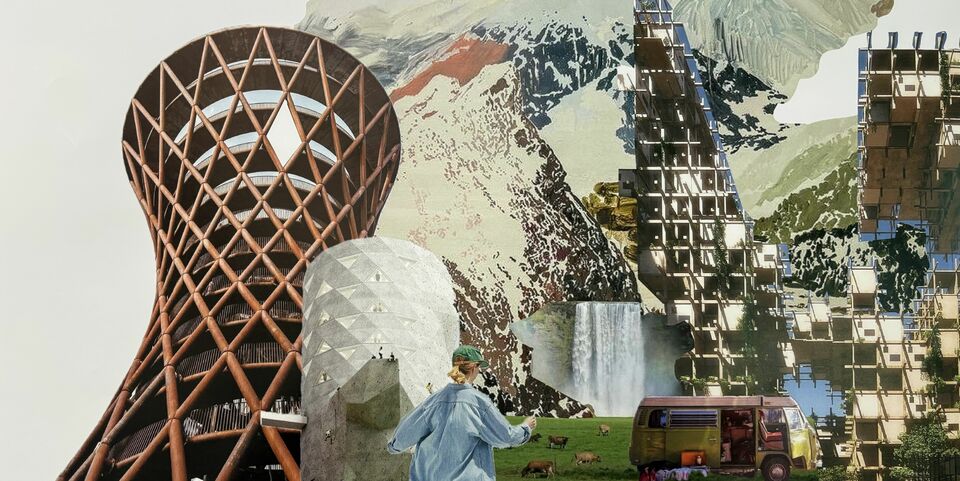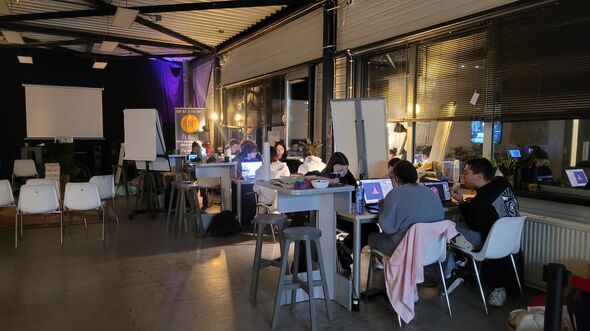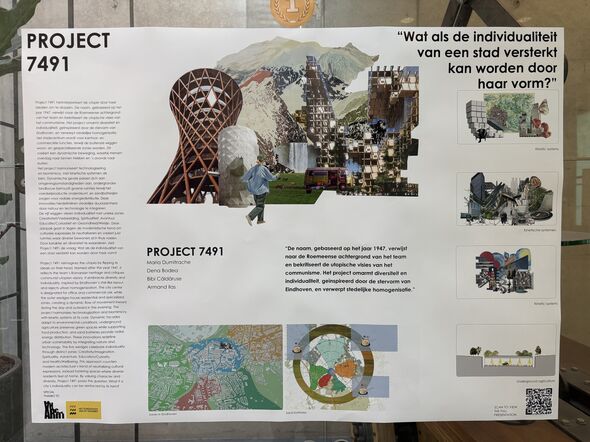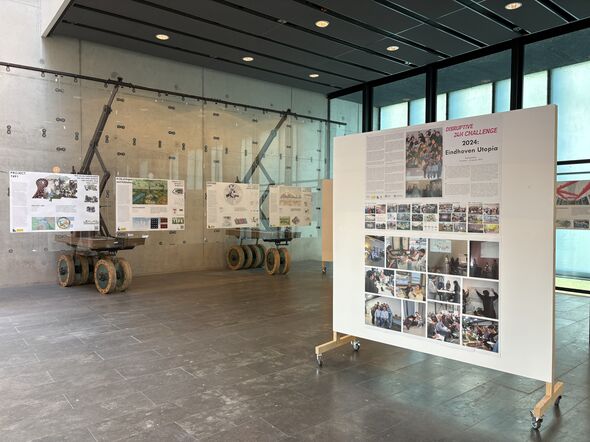“Design the city of the future in which sustainability, inclusiveness and innovation are priorities.” With that assignment, eight teams of students from TU/e, TU Delft and Design Academy Eindhoven set to work late last year. It was the 7th edition of the 24-hour Challenge, co-organized by study association AnArchi and the municipality of Eindhoven. The team with five TU/e students won. The exhibition of the works has been in the city hall for a while, but is now on display on campus.
The first prize was won by TU/e students Maria Dumitrache, Dena Bodea, Bibi Căldărușe (Architecture) and Armand Ilaș (Mathematics and Computer Science) with 'Project 4791'.
Out-of-the-box
The team won 750 euros, which they “unfortunately” divided fairly among the four of them, Dena Bodea says with a laugh. “The jury said they didn't expect our approach. We were also quite surprised that they chose the very conceptual project, because there were other much more detailed projects. Apparently they wanted to see something out-of-the-box.”
The idea came about with five hours of sleep. “But that's more than during a normal exam period, so it was actually quite a lot,” Bodea says. “Although by noon I was really struggling to keep my eyes open.”
Project 4791
The idea for the project began with the four students' common homeland, Bodea says. “We wanted to make the theme 'Eindhoven Utopia' personal. In 1947, the communist period began in Romania, which was seen as a utopia. Such a society was perfect, but instead it turned out to be a dystopia. That's why we reversed the year. This project, on the contrary, embraces individuality and diversity.”
Teammate Bibi Căldărușe explains that they went in search of what would make a city almost perfect, given a utopia does not exist. “We all want to be happy and to achieve that you have to have a goal in your life. Therefore, we created five sections with a specific function, which have to do with goals people pursue: health and well-being, knowledge, spirituality, creativity and imagination, and adventure.”
The five sectors into which the ring is built are for living and their specific function. Downtown is for commercial purposes. Bodea: “In the morning people leave for downtown to work and in the evening they go home. A breathing city in a way.”
Sand Energy
The concept also had to consider sustainability, inclusiveness and innovation. The winning group did that by putting agriculture under the city. For renewable energy, they also have an innovative solution. “We created an underground sand battery under the Eindhoven ring road by storing thermal energy in it. We saw an example from New Zealand of such a sand battery.”
Thinking outside the box
The students hope visitors will be inspired by their project. “We want to show that pursuing a goal makes people happy and that it is good to belong to a community,” Bodea says.
Căldăruşe adds that she not only hopes the idea itself will lead to inspiration. “Our project was also very conceptual. I think it can help students to think more conceptually themselves, because at a technical university we think a little too logically and realistically. Sometimes it's just good to think outside the box.”
The exhibit is now on display in the stairwell near the Vertigo entrance until March 7.





Discussion